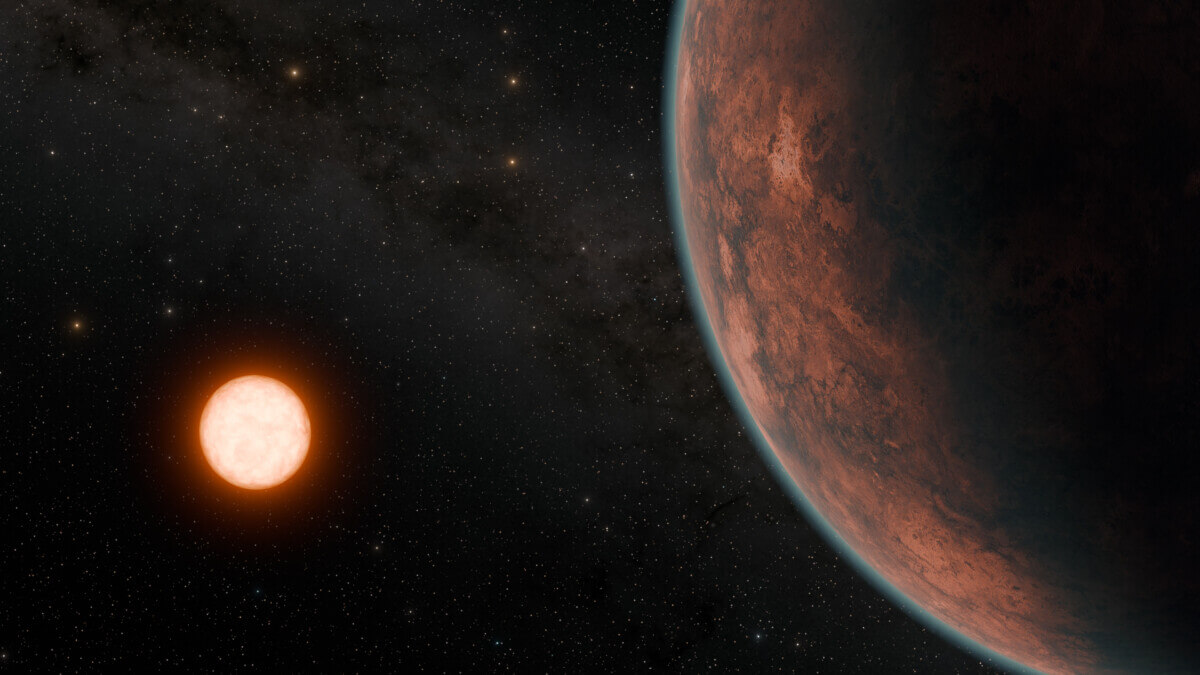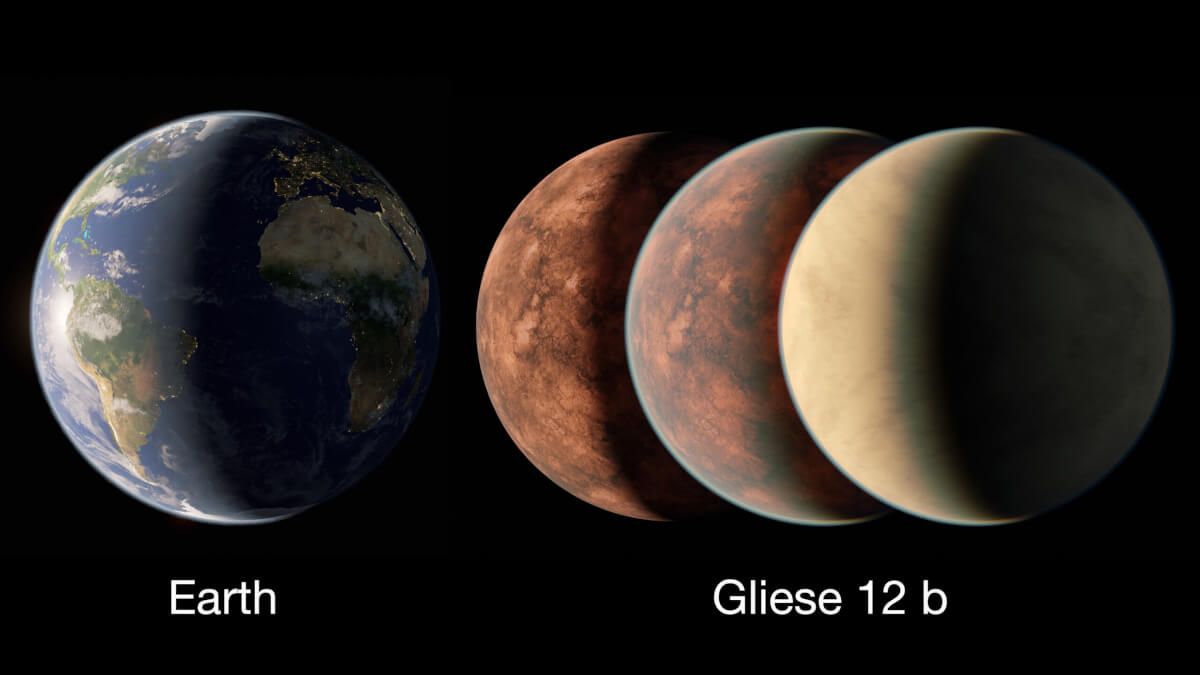
Gliese 12 b, which orbits a cool, red dwarf star located just 40 light-years away, promises to tell astronomers more about how planets close to their stars retain or lose their atmospheres. In this artist’s concept, Gliese 12 b is shown retaining a thin atmosphere. (Credit: NASA/JPL-Caltech/R. Hurt (Caltech-IPAC))
QUEENSLAND, Australia — In an exciting breakthrough, astronomers have discovered a potentially habitable Earth-like exoplanet, named Gliese 12 b, orbiting a cool red dwarf star just 40 light-years from Earth. This tantalizing find has been hailed as “the nearest, transiting, temperate, Earth-size world located to date” and could provide crucial insights into the habitability of planets around the most common type of star in our galaxy.
Gliese 12 b was first spotted by two international teams using NASA's Transiting Exoplanet Survey Satellite (TESS), which monitors the brightness of stars, looking for tiny dips caused by planets passing in front of them. Their findings, published in the Monthly Notices of the Royal Astronomical Society, highlight the significance of this new world.
The discovery of Gliese 12 b is particularly exciting because it is one of only a handful of temperate, Earth-like planets close enough to Earth to be studied using current facilities. Researchers say the exoplanet has an estimated surface temperature of 42°C (107°F), notably lower than most of the 5,000-odd exoplanets confirmed so far.
“Gliese 12 b represents one of the best targets to study whether Earth-size planets orbiting cool stars can retain their atmospheres, a crucial step to advance our understanding of habitability on planets across our galaxy,” says Shishir Dholakia, a doctoral student at the Centre for Astrophysics at the University of Southern Queensland in Australia, who co-led one of the research teams.
To pin down the correct orbital period and confirm the planet's existence, astronomers used the CHEOPS (CHaracterizing ExOPlanets Satellite) spacecraft and ground-based telescopes, including MINERVA-Australis, SPECULOOS, and Purple Mountain Observatory. These follow-up observations conclusively showed that Gliese 12 b circles its star every 12.76 days, placing it in the temperate zone where temperatures could allow liquid water to exist on the surface.
However, researchers say if it has a Venus-like atmosphere or no atmosphere at all, the planet would be inhospitable. Studying the atmosphere of this exoplanet could also shed light on why Earth and Venus, despite their similarities, evolved so differently.
What makes Gliese 12 b so intriguing is its similarity in size to Earth. With a radius just 1.0 times that of our planet, it is one of the smallest exoplanets discovered to date. However, being Earth-sized doesn't necessarily mean Earth-like. To determine whether Gliese 12 b could potentially support life, astronomers need to know more about its atmosphere and composition.

One factor that bodes well for Gliese 12 b's potential habitability is the relative calmness of its host star. Red dwarfs are known for their frequent and powerful X-ray flares, which can strip away a planet's atmosphere. However, analyses by both teams suggest that Gliese 12 shows no signs of such extreme behavior, increasing the chances that the planet's atmosphere may still be intact.
Even more exciting is the prospect of studying Gliese 12 b's atmosphere. When the planet passes in front of its star, some of the starlight filters through the planet's atmosphere, leaving imprints of its chemical composition. Using powerful telescopes like the recently launched James Webb Space Telescope, astronomers may be able to detect the presence of molecules like water, carbon dioxide, and methane, which could hint at the possibility of life.
At 40 light-years away, Gliese 12 b is roughly the same distance as the TRAPPIST-1 system, which hosts seven Earth-sized planets. While initial discoveries in the TRAPPIST-1 system raised hopes of potentially habitable water worlds, subsequent studies suggested that most, if not all, of these planets likely lack atmospheres and are barren.
Gliese 12 b's proximity to Earth also makes it an attractive target for future exploration. While currently beyond our reach, this discovery fuels the imagination and drives the development of new technologies that could one day allow us to visit our cosmic neighbors.
The discovery of Gliese 12 b marks a significant step forward in the search for Earth-like worlds and brings us closer to answering the age-old question: Are we alone in the universe? As astronomers continue to study this fascinating new world, we may soon uncover the secrets of our nearest Earth-sized neighbor and pave the way for a better understanding of our place in the cosmos.










